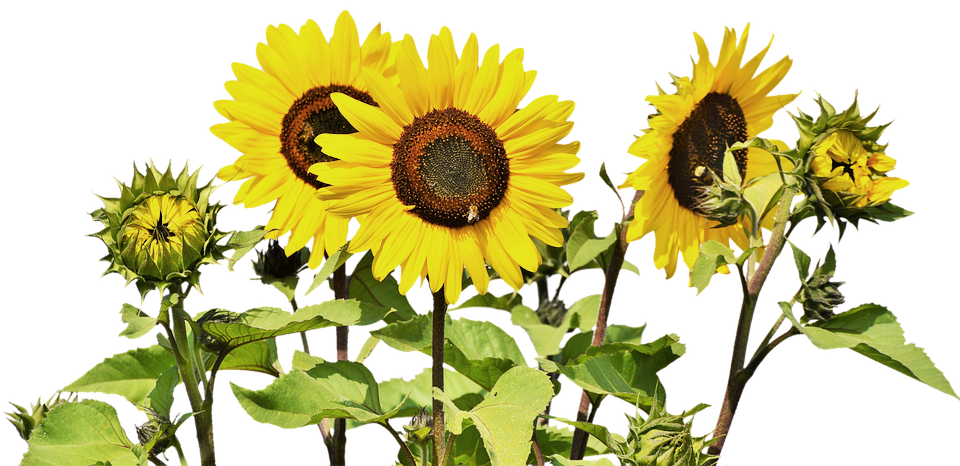
Harvesting Your Edibles
By Chris Edmunds
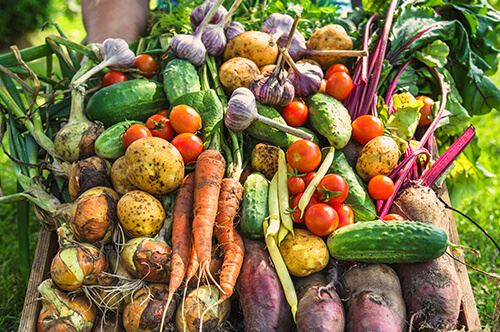
By now you’ve probably enjoyed at least some edible goodies from your garden this summer, but fall is an excellent time to harvest! There's nothing better than a hearty soup made from your homegrown garden vegetables, or salad fixings that you've picked mere moments before a meal.
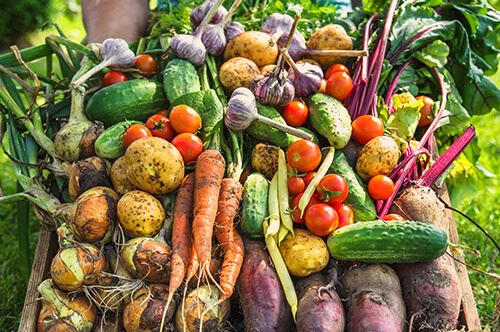 If you haven't harvested your veggies yet, you'll want to aim for the height of their respective seasons. Most root vegetables taste a little sweeter if you wait to harvest them until after a frost, but anything above ground should be brought in before it gets much colder overnight.
If you haven't harvested your veggies yet, you'll want to aim for the height of their respective seasons. Most root vegetables taste a little sweeter if you wait to harvest them until after a frost, but anything above ground should be brought in before it gets much colder overnight.
Salad Crops
Veggies like kale, spinach, lettuce, and chard should be harvested soon. Kale is certainly the toughest of the bunch and mature plants can survive temperatures as low as 14°F, but all your other salad greens should come off sooner than later. With lettuce and spinach, you can pick plants off leaf by leaf, or you can cut it in big bunches and harvest it all at once.
Salad crops are best harvested in the early morning when they're still crisp. Veggies like spinach and lettuce actually taste a little better when they're young, so harvest them earlier than later—even the littlest leaves. Harvest kale and Swiss chard by removing individual leaves from the stem once they have reached approximately the size of your hand. Start with the lower more mature leaves and allow the central/top leaves to continue to grow. As the season goes on, it will start to look like a little palm tree with the leaves at the top and a bare trunk-like stem.
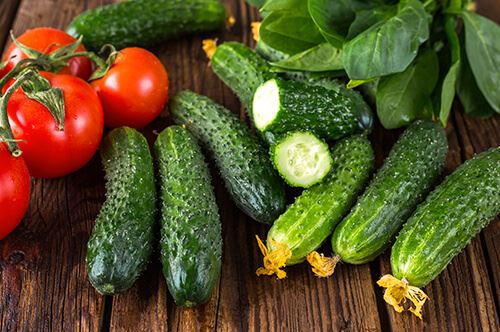 Tomatoes, Peppers, and Cucumbers
Tomatoes, Peppers, and Cucumbers
You've probably been eating fresh tomatoes and cucumbers for a while already. But, if you think we're in for a blast of frost, you'll want to get them all in as soon as possible.
We recommend wearing long sleeves and gloves when harvesting cucumbers because they're leaves, stems, and sometimes even the fruit, can be pretty prickly! You can use a sharp knife cleaned with alcohol to cut through the stems of cucumbers, or you can snap or twist them off. If frost is imminent, take all of the cucumbers, even the baby ones. They make great pickles!
Tomatoes should come off the vine pretty easily when they're ripe. If you need two hands or have to get them a good tug, they're not quite ready. That said, if it's going to freeze, you can harvest all of them, even the green ones. If you spread them out on some newspaper in the house, they'll ripen with time—even the littlest ones.
Peppers are ready to pick when the fruit is at the size you’d like or they have turned a bright color. Lift the peppers upwards and they should easily separate from the main stem when they are ready. For green bell peppers, which are less mature, it may be easier to use a pair of pruners or scissors. Harvest them all before the first frost, as they are very sensitive to cold.
Pumpkins and Winter Squash
If you were able to avoid the many insects and disease issues that can affect these crops by this time in the year, then give yourself a big pat on the back! You can harvest these for immediate use as long as they are of the desired size you want, but if you plan on storing them for any length of time, it’s better to wait for the skins to toughen. You can check this on fully-colored fruits by running your fingernail along the skin while applying light pressure. If you don't see much change in that area, you are ready to pick! Many of these fruits may need to stay on the vine to mature until the leaves have yellowed and started dying back. Tip: When harvesting, try to keep the stem (handle) of your pumpkins long, as it will improve its shelf life.
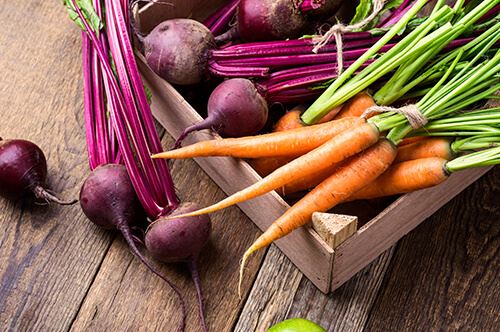 Root Vegetables
Root Vegetables
Carrots, beets, turnips, and parsnips will all benefit from one or two nights of light frost before you harvest them. When it's frosty at night, some of the starches in root vegetables turn into sugars, making them taste just a little bit better. Some vegetables that can be on the bitter side, like parsnips, seem to lose their bitterness as well.
Sweet potatoes are a fall crop and need to be harvested once the leaves begin to turn yellow and die back. You can harvest them earlier if you need them as long as the root tubers are big enough. Sweet potatoes are a tender crop so they will need to be dug up before the first frost. Be careful while digging because the skins are very fragile! Instead of washing the dirt off, it is better to brush it lightly and allow the potatoes to cure for a week or two in a humid but well-ventilated area that is around 75-80˚F. This will allow them to store for a much longer period of time.
Herbs
Some herbs, like parsley, sage, and mint, are pretty tough. But almost everything else should be harvested before the frost sets in. You can clip all herbs back to about an inch above the soil and take them inside. Depending on how you want to store them, you may want to remove all the leaves right away or hang them by their stalks to dry before removing the leaves.
Happy harvesting from your friends at Kaw Valley Greenhouses!

